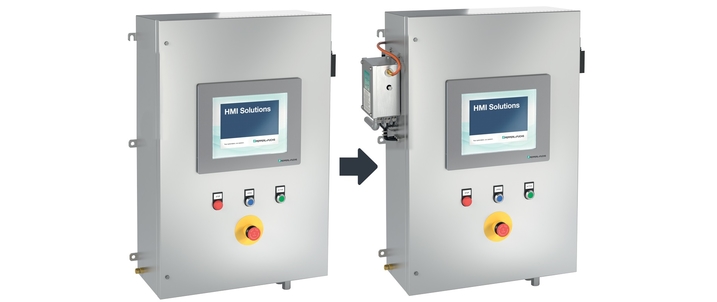Design Considerations
Adding a purge and pressurization system is one of the easiest and least expensive ways to make a standard enclosure compatible for operation in a hazardous location. Here are some factors that should be considered when adding a purge and pressurization system to a standard enclosure:

- The pressure source must be clean and sufficient to purge and compensate for leakages from the enclosure. Large enclosures usually have large doors, which may require latches to hold the pressure of the enclosure.
- The wiring to and from the enclosure has to be protected for the area classification. Class I, Division 1 may require explosion-proof conduit with seals while a Zone 2 area may require increased safety wiring. All applicable codes must be examined.
- The enclosure has to be sturdy enough to take the purging pressure of the system and, after purging, maintain pressure for operation. In hazardous gas environments, enclosures are purged, which causes the pressure within the enclosure to increase. Reinforcement rails may have to be added inside the enclosure to prevent it from deforming during the purge process. Larger enclosures endure more stress due to the larger surface area.
- T-codes and the internal temperature of the enclosure must be determined to prevent ignition of the hazardous atmosphere during operation. If the internal temperature is above the ignition temperature of the hazardous area, the enclosure cannot be opened as long as the temperature is elevated, even if the enclosure is de-energized. This usually requires the door latch and all access ports to be locked.
- If the housing is plastic or has a plastic accessory on it like a window, then it must be flame retardant and must meet electrostatic discharge requirements. These requirements can be found in applicable standards, if required.
- Installing a certified purge system on a standard enclosure with equipment inside does not mean the entire system is certified for operation in a hazardous location. The system requires its own hazardous location certification. Using certified equipment in the system makes complete certification easier and less expensive.







 +61 3 9358 3400
+61 3 9358 3400